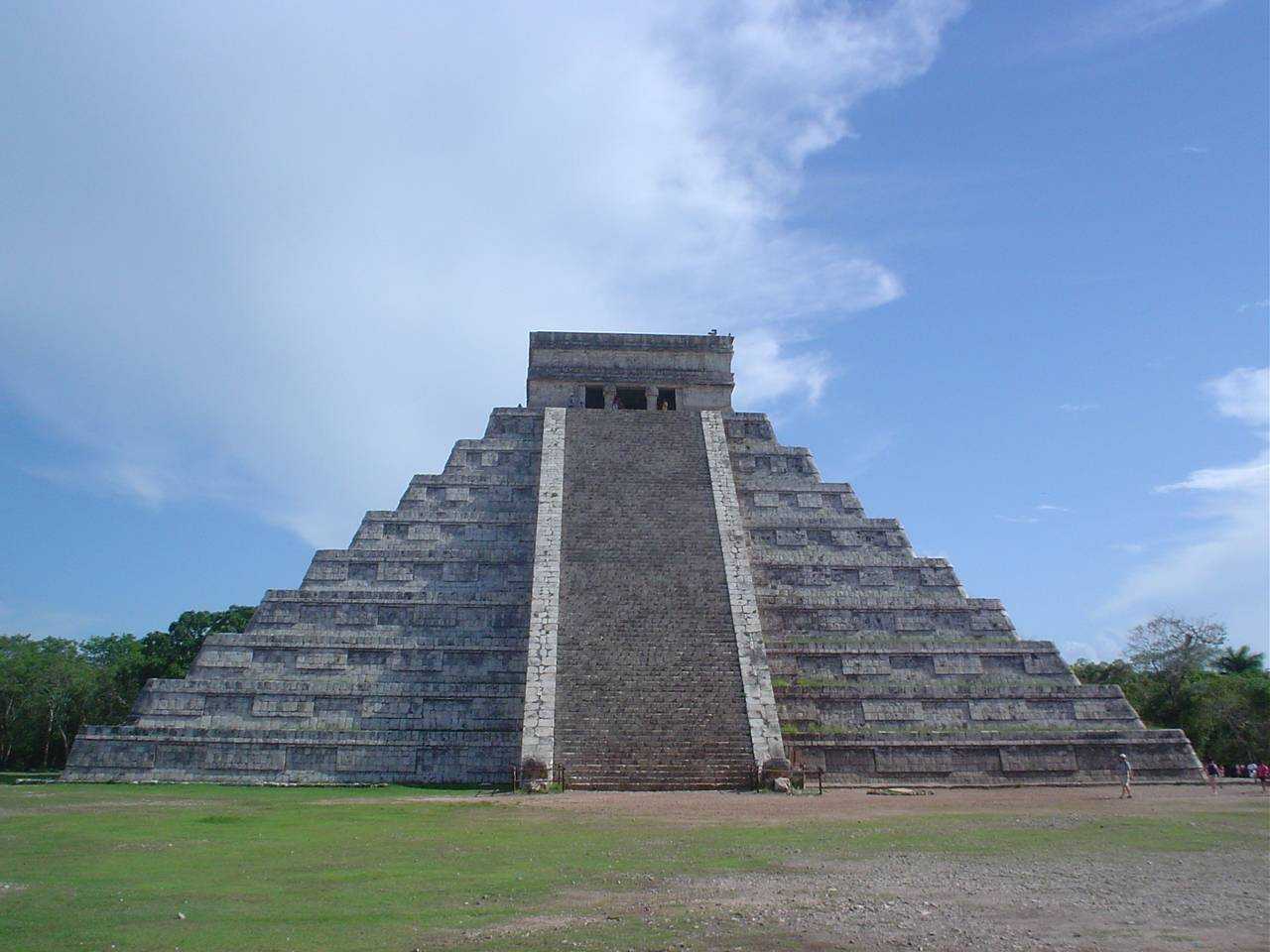Chichen Itza stands as a monumental testament to the ingenuity and artistry of the Maya civilization. This ancient city, nestled in the Yucatan Peninsula of Mexico, was a major focal point for the Maya people. It thrived from around 600 AD to the 1200s. Today, it’s recognized as a UNESCO World Heritage Site and one of the New Seven Wonders of the World. Its iconic pyramid, El Castillo, dominates the landscape, but the site is also home to a wealth of other architectural and astronomical wonders.
Get your dose of History via Email
Historical Background of Chichen Itza
Chichen Itza’s discovery by the outside world dates back to the 19th century. American explorer John Lloyd Stephens and British architect Frederick Catherwood documented it in 1843. The Maya people built this city, with construction likely starting in the 5th century AD. Over time, it became a center of political, economic, and religious life. The city saw new inhabitants and influences, including the Toltecs, which led to a fusion of architectural styles. Chichen Itza was not just a city; it was a stage for significant events, including religious ceremonies and possibly human sacrifices.
The Maya civilization, known for its advanced knowledge of astronomy and mathematics, built Chichen Itza. The city’s architecture reflects this expertise. The builders designed El Castillo, also known as the Temple of Kukulcan, to align with astronomical events. Twice a year, during the spring and autumn equinoxes, the setting sun casts shadows that resemble a serpent slithering down the pyramid’s steps. This phenomenon attracts thousands of visitors annually.
Chichen Itza’s decline began around the 13th century, though the reasons remain unclear. Some historians suggest that internal conflicts, resource depletion, or drought could have contributed. Despite its decline, the site remained a place of pilgrimage for the Maya. It was not entirely abandoned when the Spanish conquistadors arrived in the 16th century. The city’s ruins provide a window into the past, revealing the complexity and sophistication of the Maya civilization.
Throughout its history, Chichen Itza has seen various rulers and influences. The city’s golden age was during the Terminal Classic period (around 800-900 AD). During this time, it became one of the most powerful cities in the northern Maya lowlands. The site’s architecture and inscriptions suggest that it was a melting pot of cultures, with influences from other regions of Mesoamerica.
Chichen Itza holds a special place in history. It is a symbol of the Maya’s astronomical, architectural, and artistic achievements. The site continues to be a source of pride for the descendants of the Maya and a place of intrigue for historians and archaeologists. Its legacy lives on as a reminder of a civilization that once flourished in the heart of the Yucatan.
About Chichen Itza
Chichen Itza is a marvel of ancient engineering and architecture. The site spans over 5 square kilometers and contains numerous structures. These include the Great Ball Court, El Castillo, the Temple of the Warriors, and the Sacred Cenote. The materials used for construction were primarily limestone, quarried from nearby sources. The Maya utilized their extensive knowledge of geometry and acoustics in the design of these structures.
El Castillo, the centerpiece of Chichen Itza, stands at about 30 meters tall. Each of its four sides has 91 steps, which, along with the final platform at the top, totals 365 steps. This number corresponds to the days of the solar year. The pyramid’s design showcases the Maya’s deep understanding of astronomy and their calendar system.
The Great Ball Court is another architectural highlight. It is the largest known ball court in ancient Mesoamerica. The acoustics of the space are so precise that a whisper at one end can be heard clearly at the other, over 150 meters away. The carvings on the walls depict scenes from the ball game, which had significant ritual importance.
The Temple of the Warriors is a large stepped pyramid flanked by rows of carved columns depicting warriors. This structure is an example of the Toltec influence on Maya architecture. The integration of Toltec and Maya styles is evident throughout Chichen Itza, reflecting the cultural synthesis that occurred during its peak.
The Sacred Cenote, a natural sinkhole, was a place of pilgrimage and sacrifice. Artifacts such as gold, jade, pottery, and human remains have been found here. These offerings suggest that the cenote was an important religious site, possibly dedicated to the Maya rain god, Chaac.
Theories and Interpretations
Chichen Itza is shrouded in mystery and has given rise to various theories about its use and significance. Some believe that the Sacred Cenote was used for human sacrifice during times of drought. This theory is supported by the discovery of human remains and objects that suggest ritualistic offerings.
El Castillo’s alignment with the equinoxes has led to interpretations that it served as a giant calendar or observatory. The Maya’s knowledge of the cosmos was integral to their culture, influencing their agricultural practices and religious ceremonies.
There are also theories about the purpose of the Great Ball Court. Some historians think it was a site for games with religious significance. Others suggest that it was a place for resolving conflicts or even a court of law.
The fusion of architectural styles at Chichen Itza has prompted interpretations about the city’s history. The presence of Toltec elements suggests a period of conquest or cultural exchange. This blending of styles has made Chichen Itza a symbol of Mesoamerican unity.
Archaeologists have used various methods to date the structures at Chichen Itza. These include carbon dating and studying the architectural styles. The consensus is that the city’s major construction phases occurred between the 7th and 10th centuries AD.
At a glance
Country: Mexico
Civilization: Maya, with Toltec influence
Age: Main construction phases from 7th to 10th century AD
Conclusion and Sources
Reputable sources used in the creation of this article include:
- UNESCO World Heritage Centre – https://whc.unesco.org/en/list/483/
- Wikipedia – https://en.wikipedia.org/wiki/Chichen_Itza
- Britannica – https://www.britannica.com/place/Chichen-Itza
- World History Encyclopedia – https://www.worldhistory.org/Chichen_Itza/

